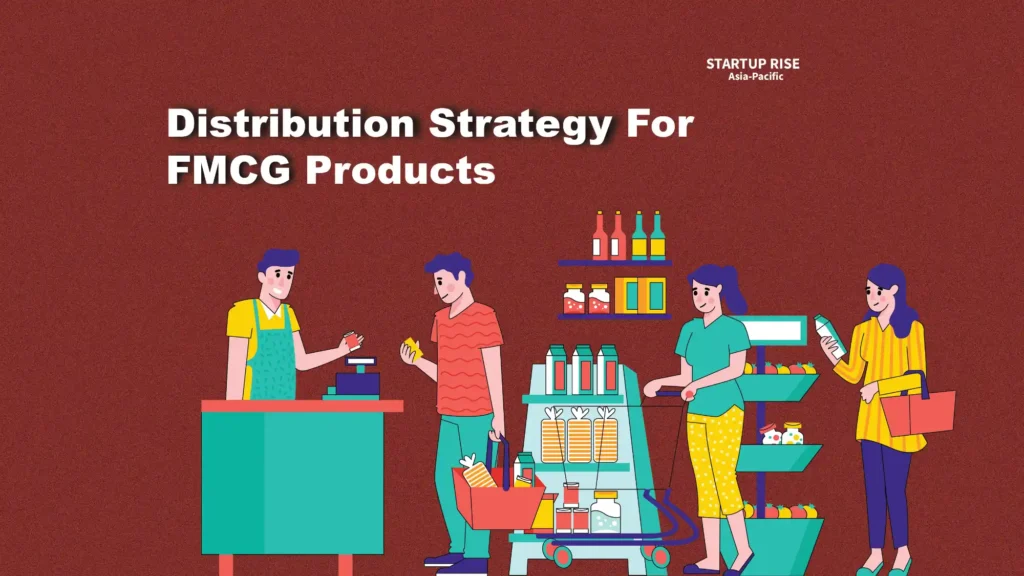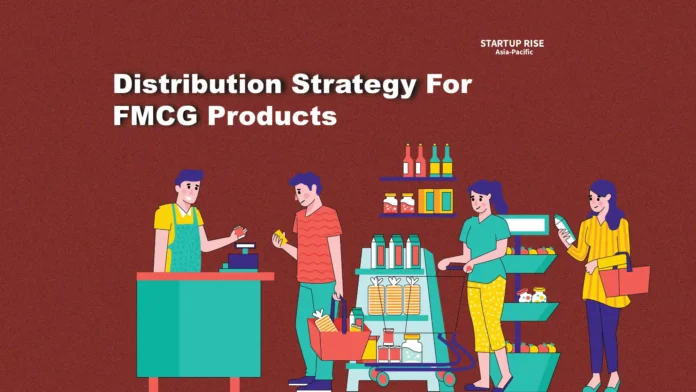
This article will focus on FMCG distribution and its channels, which play a vital role in the FMCG sector. Establishing a strong distribution channel and strategy is essential for successful growth in the FMCG business. Let us discuss this topic in more detail.
What is FMCG distribution?
FMCG distribution involves efficiently transporting fast-moving, low-cost products such as food, beverages, cosmetics and household goods from manufacturers to consumers. The process relies on intermediaries such as super stockists, distributors, wholesalers and retailers who collaborate to ensure timely delivery to the right locations.
Successful FMCG distribution depends on a well-organised supply chain that can manage large volumes of products and adapt instantly to fluctuations in consumer demand. Smaller brands typically use multi-brand distributors, while larger FMCG brands often opt for specialised super stockists or distributors.
What is the FMCG distribution channel?
FMCG distribution channels serve as routes for products to reach consumers, facilitating the flow of goods, information, and finance. Most FMCG manufacturers depend on these channels, which include agents who promote products without handling inventory, merchants who buy and stock goods for resale, and facilitators such as logistics services for transportation. These channels require careful planning and investment to set up, which are key to a company’s competitive strategy and marketing costs.
From the public point of view, these channels create employment opportunities and ensure product availability across different socio-economic segments. Market needs and competitive strategies classify channels based on directness (producer-consumer transactions), level (number of intermediaries involved), density (number of outlets), diversity (types of outlets), and novelty (new distribution methods such as online sales). Understanding these factors helps companies create distribution strategies to meet market demands and stay competitive in the FMCG industry.
Distribution strategy for FMCG products
1. Determine the proper channels for your industry or sector, such as Modern Trade (MT), General Trade (GT), Horeca (hotels, restaurants and cafes/catering), Specialist, Vending, Wholesale and others. These include both online and offline channels.
2. In today’s data-driven distribution landscape, it is essential to invest in advanced analytics tools. Analysing sales, inventory dynamics, and consumer behavior data can provide valuable insights. These insights help align distribution strategies with changing market conditions.
3. Use consumer behaviour data to understand where and when people prefer to buy your products. Adjust distribution strategies accordingly to effectively meet consumer preferences.
4. A well-optimised supply chain is essential for FMCG operations. Evaluate suppliers, transportation partners and warehouses for reliability, cost-efficiency and adaptability. Streamline supply chain processes to reduce lead time, cost and the risk of stockouts.
5. Monitor and assess channel development trends across the industry, including competitors, to gain external perspectives and avoid internal biases.
6. Utilise technology to improve distribution processes, implement warehouse management systems (WMS) for better inventory management and use route optimisation software to improve delivery efficiency and reduce costs.
7. Evaluate existing distribution channels such as traditional retail, e-commerce and direct-to-consumer based on product and audience suitability. Adopting a multi-channel strategy can aid in maximising market reach.
8. Understand market share and trends in each channel compared to competitors. Stay informed about recent developments and future projections.
9. Build strategic partnerships with retailers and distributors to enhance market presence and execution. Align incentives and collaborate on joint business plans to benefit both parties.
10. Foster innovation and adaptability to thrive in the dynamic FMCG industry. Explore new technologies, such as autonomous distribution and blockchain, to improve supply chain transparency and efficiency.
11. Strictly adhere to regulatory requirements and maintain high quality standards across the supply chain to protect brand reputation and market share.
12. Assess your strengths and weaknesses in each distribution channel to optimise strategy and maximise success.
13. Invest in training and development for distribution teams to ensure proficiency in product management, technology utilisation, and customer service excellence.
14. Monitor profitability across all channels considering gross margin (GM) and total cost of service (TCTS) to understand financial performance compared to national averages and competitors.
15. Set distribution targets for your brand portfolio across various channels based on market trends and performance analysis. Identify distribution partners that align with your channel priorities.
Conclusion
The FMCG industry plays a crucial role in the global economy. The industry is increasingly generating significant revenues and creating jobs. To thrive in the highly competitive FMCG sector, companies must continuously innovate and adapt to shifting consumer preferences and market trends. For growth, optimizing distribution channels in FMCG requires a deep understanding of market dynamics, the adoption of advanced technology and a strong commitment to flexibility and adaptability. By implementing these strategies, businesses can boost their market share and improve their competitiveness in the fast-paced FMCG landscape.
FAQs
How does FMCG distribution work?
Distribution channels for FMCG products consist of independent businesses that collaborate with manufacturers to deliver goods to end customers. The main entities include agents who promote products without stocking them, merchants such as retailers and wholesalers who buy and distribute in bulk, and facilitators such as logistics providers who assist with transportation and storage.
What is the channel of distribution for an FMCG company?
The FMCG distribution network consists of intermediaries such as super stockists, distributors, wholesalers, and retailers who collaborate to efficiently deliver products to their intended destinations.
Is the FMCG distributorship profitable?
Investing in an FMCG distribution business can be lucrative for entrepreneurs who prioritise efficiency and customer satisfaction through strategic planning.
What is the distribution structure of FMCG?
FMCG distribution channels involve three key entities: agents, merchants, and facilitators. Agents help generate sales by promoting products but do not stock or purchase them. They can either be independent or part of the company.
What are the 3 main distribution strategies?
There are three types of distribution: intensive, selective, and exclusive. Intensive distribution aims to make products available in as many outlets as possible to reach a wide audience. Selective distribution involves choosing specific outlets in targeted locations, while exclusive distribution limits product availability to a few carefully selected outlets.





